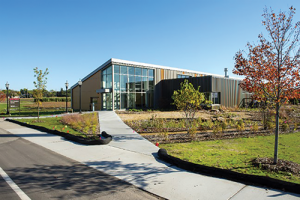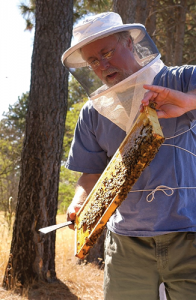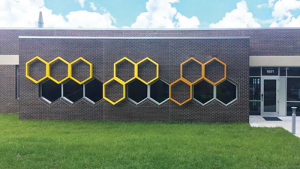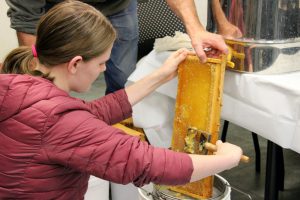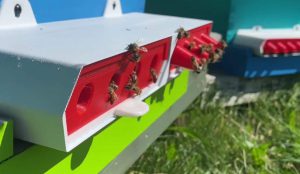By Malcolm Sanford
Honey Bee Research On The Rise.
In retrospect, 2006 appears to have been a banner year with reference to honey bee research. It began with bad news, the appearance of something that beekeepers heretofore hadn’t confronted, colony collapse disorder, or CCD. Arguably the poster child for this malady at the time was migratory beekeeper David Hackenberg, who was the first to recognize it as a recurring phenomenon and not a unique event. He was recently recognized for bringing national attention to the situation by the Union County Historical Society, and honored as a notable Union Countian in Lewisburg, PA for his life’s work contributing to pollinating crops using honey bees in six states: Florida, California, Georgia, Pennsylvania, Maine and New York.
In 2016, the Hackenberg family again suffered losses in its beekeeping operations, losing some 1400 colonies. At the same time, Bret Adee, the biggest beekeeper in the world, also lost a massive amount of investment, going from 90,000 to 40,000 hives.
“We haven’t seen any of this colony collapse disorder here,” Adee first stated back in 2007. But a few months later, he returned to discover the largest loss ever seen in beekeeping history – 40,000 hives containing two billion bees had disappeared. The event became known as a ‘bee holocaust.’”
Both Hackenberg and Adee sued the Environmental Protection Agency (EPA) in the 2016 incident for “inadequate regulation of the neonicotinoid insecticide seed coatings used on dozens of crops.” And Hackenberg was quoted as saying, “As a beekeeper for over 50 years, I have lost more colonies of honey bees in the last 10 years from the after-effects of neonic seed coatings than all others causes over the first 40 plus years of my beekeeping operation.” There was no mention of CCD as an issue with respect to the losses in this specific report.
Those pursuing the 2016 legal case against the EPA did not seem prepared to abandon CCD as a possible problem, however, appearing to conflate it with the effects of the neonicotinoids, stating “. . . CCD is not a random & undefined ‘disorder’ but a direct result of these poisons that have been wreaking havoc on our environment for already more than two decades. And yet, manufacturers like Bayer and Syngenta, along with the EPA, are still denying their effects, despite a growing body of science and empirical observations from beekeepers around the world.”
The decade from 2006 to 2016 in fact revealed a lot of research emphasizing CCD. A wikipedia page lists the following events:
“In 2006, the Colony Collapse Disorder Working Group, based primarily at Pennsylvania State University, was established.
“In July 2007, the United States Department of Agriculture (USDA) released a CCD Action Plan, which outlined a strategy for addressing CCD consisting of four main components: survey and data collection; analysis of samples; hypothesis-driven research; mitigation and preventive action.
“The first annual report of the U.S. Colony Collapse Disorder Steering Committee was published in 2009, and the second was released in November 2010.
“A 2015 review examined 170 studies on colony collapse disorder and stressors for bees, including pathogens, agrochemicals, declining biodiversity, climate change and more. The review concluded that “a strong argument can be made that it is the interaction among parasites, pesticides, and diet that lies at the heart of current bee health problems.
“Furthermore: During the spring of 2015, President Barack Obama unveiled the very first national strategy for improving the health of bees and other key pollinators. The plan calls for restoring seven million acres of bee habitat with a variety of different flowering plants for bees to gather nectar from. The administration is also proposing spending $82.5 million for honey bee research.”
Wikipedia may not be considered by some a reliable source, but the above list seems to correlate with results described in Notes and Comments in the Journal of Apicultural Research in 2010: “Colony losses, Managed Colony Population Decline, and Colony Collapse Disorder in the United States,” Journal of Apicultural Research 49(1): 134-136 (2010) © IBRA 2010, DOI: 10.3896/IBRA.1.49.1.30. https://naldc.nal.usda.gov/download/41836/PDF:
“The cause(s) of CCD in U.S. bee colonies remains under investigation but are similar to those for colony losses in general. For example, Israeli acute paralysis virus (IAPV) has been found in many samples taken from colonies exhibiting CCD-like symptoms although it is not believed to be the sole cause of CCD (Cox-Foster et al., 2007). Similarly, Nosema ceranae has become widespread in the U.S. (Klee et al., 2007; Chen et al., 2008), though its role in colony losses is not understood fully (Paxton, 2010). Consequently, many conceivable and realistic hypotheses remain plausible. Not listed in any particular order, the primary hypotheses include, but are not limited to: 1. traditional bee pests and pathogens (for a listing of bee pests / pathogens present in the U.S., see Ellis and Munn, 2005); 2. how the Colony losses in the U.S. were managed (management stress); 3. queen source (poor genetic biodiversity); 4. chemical use in bee colonies to control bee pests / pathogens; 5. chemical toxins present in the environment; 6. V. destructor mites and associated pathogens; 7. bee nutritional fitness; 8. undiscovered/newly discovered pests and pathogens or increasing virulence of existing pathogens; and 9. potential synergistic interactions between two or more of the above hypotheses.”
The spate of attention to CCD, and an increasing hue and cry from the press and others about honey bee losses, along with the often unrealistic contention that the human food supply was at risk, was a public relations boon for honey bees and by extension, apicultural research. An influx of significant funding began to emerge relating to a new term coined during the period, which went beyond colony collapse disorder, “honey bee health.”
Ironically, the same year of the law suit against the EPA noted in the report above (2016), the following was published:
“It may not be the Ice Bucket Challenge, but even minor environmental awareness is good, right? Actually, in this case, it may not be necessary. That’s because honey bee populations are not in decline. They haven’t been for a few years now. In fact, many experts believe that honey bees are not in any imminent danger of extinction.”
With the subtitle: “After Years of Uncertainty, Honey bees Appear Poised to Recover From Collapse” the report was able to state: “CCD was a real problem, probably six or seven years ago . . ., but in the past three to five years researchers have not seen much CCD and that globally honey bee populations are not in decline.”
The remarkable turn around expressed in the above report appears to lose sight of the impact of increased funding for honey bee research. And the consequences of expanded emphasis on honey bee health by beekeepers and the research community alike, set in motion when the specter of CCD when first raised, continue to be pretty much ignored in present-day reporting.
Perhaps, the best example of increased attention to honey bee health referred to above is emergence of several university laboratories dedicated to apicultural science. Three come to mind at the moment. Each is in its own state of development, and based primarily on funding available, the diversity of its staff and the vision of its founder.
The University of Minnesota’s Honey Bee Lab has got to be considered one of the jewels of its type, as is its founder, Dr. Marla Spivak, MacArthur Fellow and McKnight Distinguished Professor in Entomology at the University of Minnesota. Her recent awards include the 2015 Minnesota AgriGrowth Distinguished Service Award, the 2016 Siehl Prize laureate for excellence in agriculture, and the 2016 Wings WorldQuest Women of Discovery Earth Award.
Dr. Spivak worked for a commercial beekeeper in New Mexico in 1975 and obtained her PhD from the University of Kansas in 1989, working with Dr. Orley (Chip) Taylor, on the identification and ecology of Africanized and European honey bees in Costa Rica. She was a post-doctoral researcher at the Center for Insect Science at the University of Arizona before being hired at the University of Minnesota, St. Paul Campus, in 1993.
Major programs of what is now being called the Spivak Bee Lab include its educational outreach, the bee squad, an extensive research agenda focusing on honey bees and a “native bee” study effort. Perhaps most significant is a long list of former students, most whom have gone on to be hired in bee-related employment. A unique presence in the laboratory is that of “Gary-of-all-trades,” Gary Reuter, who adds a bit of reality to the academic environment. Beyond maintaining a beekeeping operation of his own, as well as the research colonies of the lab, he trains and work with students in the field, designs and builds specialty equipment, and speaks to beekeeping, student and civic groups. He plans the extension short courses and together with Dr. Spivak teaches beginning as well as experienced beekeepers.
The university has built two new facilities: A Bee and Pollinator Research Lab on the St Paul campus, and the Tashjian Bee and Pollinator Discovery Center, for the public, at the University of MN Landscape Arboretum. The Budget for this “Scientific Research St. Paul Campus Bee and Pollinator Research Lab” complex was about $6.45 million. State-funded bonds cover two thirds of the cost of the project. The remaining must be funded through private gifts. To date, gifts and commitments of over $1.5 million have been secured for this project. Fund raising is ongoing via a number of initiatives.
The Washington State University (WSU) Honey Bee and Pollinator Research Facility is expected to provide the means to conduct unparalleled research and outreach to create sustainable solutions to problems facing pollinators.
It currently features a diagnostic lab set up at WSU in 2008 to evaluate samples for the presence and prevalence of parasites and pathogens. In the first year, over 1800 were processed, including those obtained from commercial and hobby beekeeper operations and university research apiaries.
Research using 250 colonies distributed in 10 research and teaching apiaries is centered on projects addressing problems of major importance to Pacific Northwest (PNW) beekeepers. Current specific efforts include: monitoring seasonal variation in Nosema ceranae infestations, molecular characterization of Nosema species in the PNW, evaluation of interactions between parasites and pathogens and examining sub-lethal effects of chemical residues in the hive and the environment.
The lab’s honey bee selection and breeding program is now in its 16th year. It provides honey bee stocks through provision of selected queens to the Washington State Beekeepers Association and so-called “collaborative apiaries.” A related program coordinated by WSU and University of California, Davis is designed to enhance U.S. honey bee diversity through importation of honey bee semen from Old World sources, evaluation of progeny and release of germplasm to the queen production industry.
Dr. Steve Sheppard is the guiding light at the WSU lab, as well as chair of the Department of Entomology. Receiving a Masters degree at the University of Georgia and Ph.D. student of Dr. Elbert Jaycox, University of Illinois, Dr. Sheppard has been Thurber Chair Professor since 1996. A specialist in population genetics and evolution of honey bees, as well as insect introductions and mechanisms of genetic differentiation, he currently heads the Apis Molecular Systematics Lab, and remains U.S. Editor of the journal Apidologie, an international journal of bee research with WSU as editorial lead institution.
With a great many graduate students and a host of international researchers from as far away as Egypt and Brazil, the WSU lab is the “goto” place for all things relating to honey bee genetics and breeding. Dr. Sheppard continues searching the globe for genetic material of interest and has entered into a partnership with Susan Cobey to collect semen, which is the only way to bring in honey bee genetic material at the moment. Ms. Cobey is one of the premier breeders in the industry, who developed the New World Carniolan honey bee, while associated with The Ohio State University, and more recently, the University of California at Davis. In addition, the lab has a relationship with Melanie Kirby, a “professional apiculturist” with an imposing resume as a Peace Corps beekeeping volunteer in South America. She also has beekeeping experience in the Yucatan Peninsula of Mexico, and the states of Hawaii and Florida. In 2005, she established Zia Queenbees Farm & Field Institute in northern New Mexico, which specializes in chemical-free management and longevity based selection and breeding of queen honey bees.
The newest honey bee research laboratory in the U.S. is now open at the University of Florida. In its unique subtropical environment, this facility made up of two separate buildings is a sight to behold. Some $200,000 in matching funds triggered around $2.5 million in state funds to house the new home of The Honey Bee Research and Extension Laboratory (HBREL), which has now ballooned to $4.3 million thanks to further donations and appropriations. It will not only feature extensive laboratory facilities, but also house a beekeeping museum and The Amy E. Lohman Apiculture Center, new home of the State of Florida Bee Inspection effort, considered by many and the most mature and professional institution of its kind in the U.S.
Dr. Jamie Ellis, Gahan Associate Professor, Honey Bee Husbandry, Ecology, and Conservation; Integrated Crop Pollination at the University of Florida is the force behind this project. Educated at the University of Georgia and University of South Africa, where he worked on small hive beetle biology, Dr. Ellis has developed a premier beekeeping education program, featuring a number of “bee colleges” around the state and in the nearby Caribbean, representing a growing master beekeeper program.
The extension program is now so extensive it merits its own coordinator. The University has just hired a faculty member who will be an instructor strictly in apiculture, while at the same time involved in developing a more extensive online curriculm in entomology. Finally, an “Applied Honey Bee Researcher” has been employed to assist the current commercial beekeeping industry in addressing some of its unique challenges.
Dr. Ellis’ research program includes a robust effort consisting of three emphases: 1) improving managed honey bee health, including honey bee colony disease/pest management, nutrition, and toxicology; 2) attempting to understand wild honey bee ecology and genetic diversity/structure in an effort to sustain honey bee populations through informed conservation efforts; and 3) maintaining an active research program focused on integrated crop pollination.
The laboratory has produced a number of graduate students who have become faculty members in their own right and are also now employed in other bee-related positions. Most recently, The New Zealand Institute for Plant & Food Research Limited (New Zealand’s equivalent to the USDA) employed a graduate of the HBREL facility. Finally, a robust visiting scholar program exists with participation from Europe as well as South America.
Beyond strictly academics, a growing research environment continues to be created incorporating other organizations. The Bee Informed Partnership (BIP), Pollinator Partnership, North American Pollinator Protection Campaign and Honey Bee Health Improvement Project are among a raft of other initiatives are now employed in honey bee and pollinator health.
 Project Apis m. was created in 2006, partially in response to CCD, in collaboration with the California Almond Board. Since that time it has been directing and funding honey bee research with some of the top researchers, scientists, and institutions in the world. Project Apis m. has so far Funded and Directed over 115 Research Projects and infused over $6 million into honey bee research.
Project Apis m. was created in 2006, partially in response to CCD, in collaboration with the California Almond Board. Since that time it has been directing and funding honey bee research with some of the top researchers, scientists, and institutions in the world. Project Apis m. has so far Funded and Directed over 115 Research Projects and infused over $6 million into honey bee research.
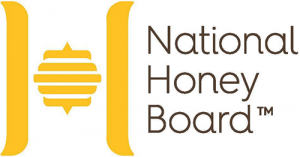 Recently the Project teamed up with the National Honey Board to produce between them $10 million in research funding for honey bee research by the year 2020. The collaboration will seek to improve the well-being of nearly 2.9 million bee colonies, with a specific focus on three main threats to bee health: pesticides, pathogens and nutrition.
Recently the Project teamed up with the National Honey Board to produce between them $10 million in research funding for honey bee research by the year 2020. The collaboration will seek to improve the well-being of nearly 2.9 million bee colonies, with a specific focus on three main threats to bee health: pesticides, pathogens and nutrition.
Finally, a unique research effort that has often flown under the radar is that of Randy Oliver, a professional beekeeper with a scientific background, who founded the web site ScientificBeekeeping.com with the subtitle: “Beekeeping Through the Eyes of a Biologist.” Again his first posts were in the year 2006, when CCD made its appearance. The effort is totally funded from Internet contributions and boasts a long list of $500 plus contributors! He currently manages around 1000-1500 hives with his two sons, but spends most of his time doing honey bee research and presenting the results around the country. His observations are a gold mine of information published regularly from California.
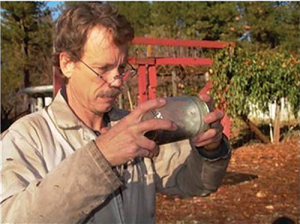 The above examples are just a few of the efforts that reveal a flowering of honey bee research since 2006. Many more have no doubt been missed here and/or are in the pipeline. These are now contributing to the toil of the traditional U.S. Department of Agriculture apicultural laboratories (Beltsville, MD; Baton Rouge, LA; and Tucson, AZ) as well as the “native bee lab” in Logan, UT, an effort going as far back as the 1890s.
The above examples are just a few of the efforts that reveal a flowering of honey bee research since 2006. Many more have no doubt been missed here and/or are in the pipeline. These are now contributing to the toil of the traditional U.S. Department of Agriculture apicultural laboratories (Beltsville, MD; Baton Rouge, LA; and Tucson, AZ) as well as the “native bee lab” in Logan, UT, an effort going as far back as the 1890s.
In conclusion, It looks like the fallout from the year 2006, when CCD was first detected, and subsequently named the “beepocalypse,” is a mixed bag. Proclaimed first a disaster for honey bees and beekeepers, which continues to be raised in some circles, that “banner year” would also mark the beginning of a wave of concern about all pollinators.
Paradoxically, it would signal a future of great promise, via the ramping up of scientific effort all across the research spectrum, in the continued search for a healthier honey bee and more prosperous pollinating enterprise.







